For newcomers to water sports, especially surfing, prioritizing safety gear is crucial. This includes a surfboard leash, which secures the board, enhances control, and prevents drift during learning curves. Choosing the right leash length (7-10 feet for beginners) and using secure tying techniques are essential. Quick-release leashes offer added safety by enabling rapid board detachment in entanglements. Ultimately, a leash is an indispensable tool for surfboard beginners, promoting safer and more enjoyable rides in bustling surf spots.
For any aspiring surfer, especially those new to the waves, prioritizing safety should be at the forefront of their journey. This comprehensive guide aims to demystify one of the essential components of a beginner’s surf setup: the leash. We’ll explore why it’s crucial for both novice and experienced riders. From understanding the need for safety gear to choosing and managing your leash effectively, this article equips you with the knowledge to navigate the surf safely.
Understanding the Need for Safety Gear: A Beginner's Guide
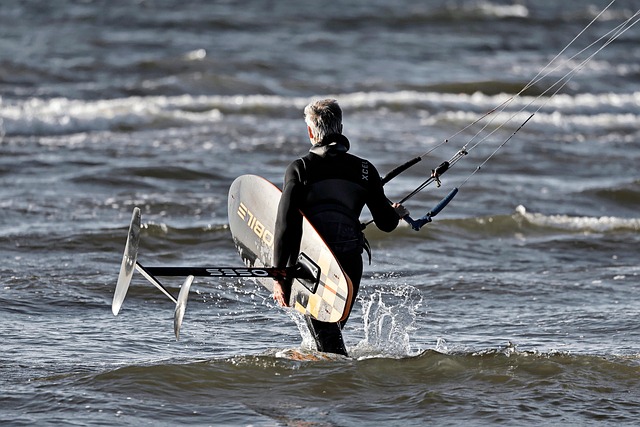
For those new to the world of water sports, especially surfing, understanding the importance of safety gear is a crucial first step. A surfboard for beginners is an exciting investment, but it’s only the beginning of your journey into a potentially thrilling and challenging sport. Just as a cyclist wouldn’t hit the roads without a helmet, surfers must prioritize their well-being by equipping themselves with appropriate safety equipment, particularly when navigating unfamiliar waves or conditions.
Safety gear serves as a vital shield against potential hazards inherent in surfing. A good leash, for instance, keeps your board close, reducing the risk of it drifting away and preventing entanglement. Wetsuits offer insulation from cold waters, ensuring comfort and minimizing the risk of hyperthermia. Additionally, impact protection gear like knee pads can mitigate injuries during falls or collisions with the board or other surfers. By embracing these essential safety measures, beginners can focus on refining their skills and enjoying the waves with peace of mind.
The Role of a Leash in Surfboard Security
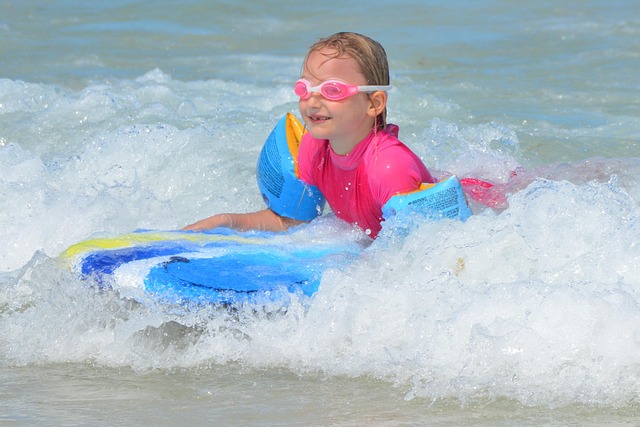
For surfboard beginners, securing your board is an essential part of learning and enjoying the sport safely. One of the most effective tools for this purpose is a leash. A surfboard leash serves as a critical security measure, connecting you to your board and preventing it from drifting away or getting damaged in choppy waters.
It’s particularly vital for newcomers who are still mastering their paddling and balance skills. With a leash, even if you take a spill and the board slides out from under you, it remains within reach, allowing you to quickly recover and get back on the wave. Moreover, leashes come in various lengths and materials suitable for different water conditions and surfboard types, catering to both novice and advanced surfers’ needs.
Choosing the Right Leash for Your First Surf Experience

When preparing for your first surf experience, selecting the appropriate leash is a critical yet often overlooked aspect. The right leash ensures your safety and comfort, allowing you to focus on learning the waves. For beginners with a new surfboard for beginners, opting for a longer leash is advisable. These offer more flexibility, providing better control and stability as you paddle out and catch those first waves. Look for a leash with a soft, non-slip grip and durable construction to withstand the elements and your initial learning curve.
Consider the material too; synthetic leashes are lightweight and affordable, ideal for frequent users who want to avoid the extra bulk of leather options. Longer lengths vary from 7 to 10 feet, catering to different surfboard sizes and personal preferences. Remember, a leash that feels comfortable and secure can enhance your overall experience, encouraging confidence as you begin surfing.
How to Properly Attach and Wear a Leash
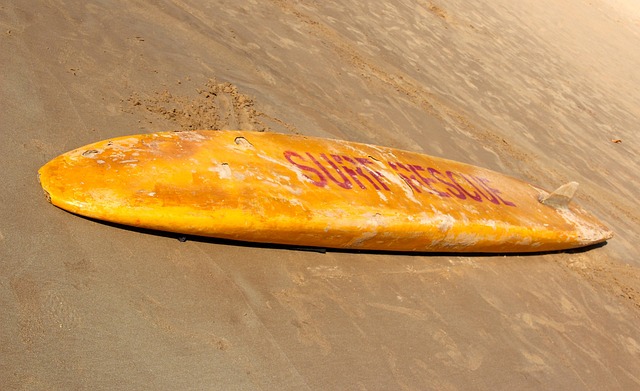
When attaching a leash to your surfboard, start by securing one end to the tail using the provided straps or hooks. Ensure it’s tight and secure; this is crucial for your safety during surfing, especially for beginners learning to balance on their surfboard. Next, take the other end of the leash and wrap it around your wrist, adjusting the fit so that it’s snug but not too tight. A properly fitted leash should allow for some movement, enabling you to paddle and stand freely while keeping the leash from tangling or wrapping around your body or surfboard.
For surfboard beginners, getting this attachment right is essential as it prevents potential hazards like losing your board or being dragged across the water by a wave. Always double-check that both ends are fastened securely before entering the water. This simple step can enhance your overall surfing experience, ensuring you focus on catching waves rather than managing gear.
Benefits of Using a Leash for Beginners

Common Mistakes to Avoid While Using a Surfboard Leash
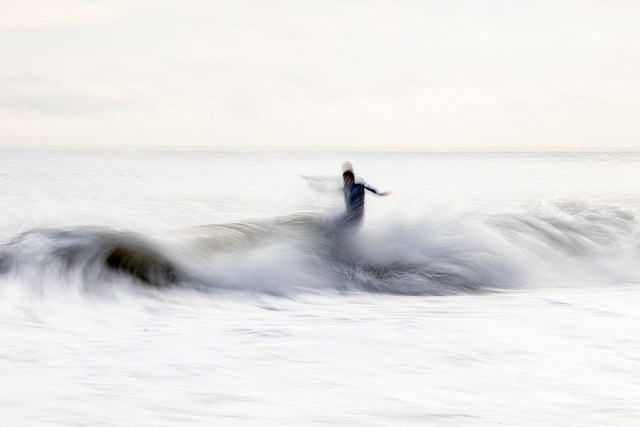
When using a surfboard leash, especially as a beginner, there are some common mistakes to steer clear of. One of the most frequent errors is selecting an inappropriate leash length, which can lead to tangles and safety hazards in the water. It’s crucial to choose a leash that fits your board and body size for optimal performance and control. For instance, using a leash too long for a shorter board might make it unwieldy, while a shorter leash on a longer board could restrict your movement.
Another blunder to avoid is neglecting proper tying techniques. Securely fastening the leash to your surfboard and ankle is vital for preventing disconnections during waves. Inexperienced surfers often slip up by not double-checking their knots, leading to potential falls and injuries. Always take a moment to ensure secure attachments before entering the water, especially when learning to paddle and catch waves with consistency.
Advanced Techniques for Effective Leash Management
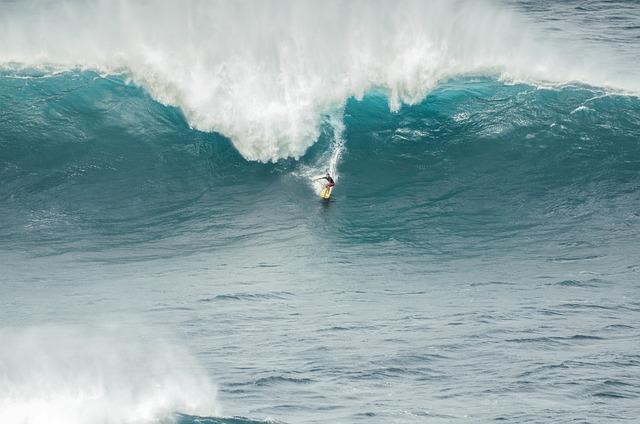
In the world of surfboard for beginners, effective leash management is a game-changer. One advanced technique involves utilizing quick-release leashes, allowing surfers to detach their boards swiftly in case of entanglement, enhancing safety during challenging waves. This simple yet powerful tool can prevent potential injuries and enable surfers to focus on riding without fear.
Additionally, practicing proper leash positioning is crucial. Surfers should ensure the leash is securely fastened around their ankle while keeping it slightly loose to avoid restricting movement. By masterminding these advanced techniques, beginners can confidently navigate the ocean, making each ride a smoother, safer experience.
Real-Life Scenarios: Why Leashes are Indispensable

In real-life scenarios, especially for surfboard beginners, having a leash is more than just a safety measure; it’s an indispensable companion. Picture this: a novice surfer gliding across the waves on their first lesson, the cool ocean breeze in their hair, when suddenly, they lose their balance and the board drifts away. This could be a frightening experience for any beginner, but with a leash securely attached to their wrist, the board stays put, preventing it from floating away and giving the surfer a crucial second chance to regain their footing.
Moreover, leashes play a vital role in preventing accidental collisions. In bustling surf spots filled with both experienced and novice surfers, having a leash ensures that if someone falls, they don’t accidentally knock into others. This is particularly important for beginners who are still learning the rhythm of the waves and may fall more frequently. Thus, a leash isn’t just a tool for safety; it’s an essential accessory for any surfboard beginner looking to enjoy the ocean with peace of mind.
